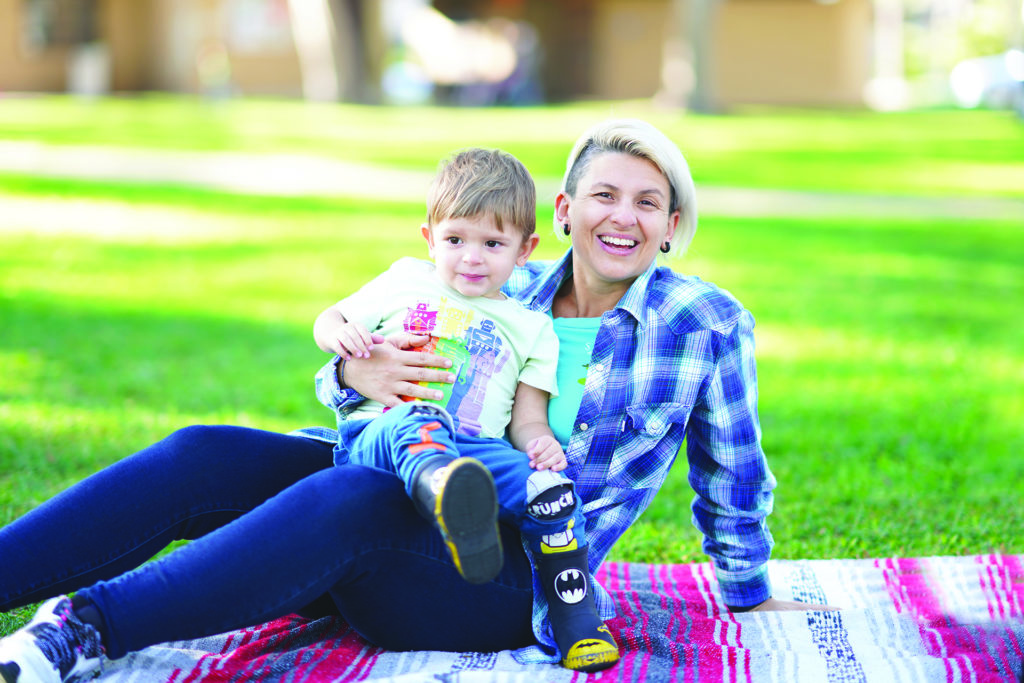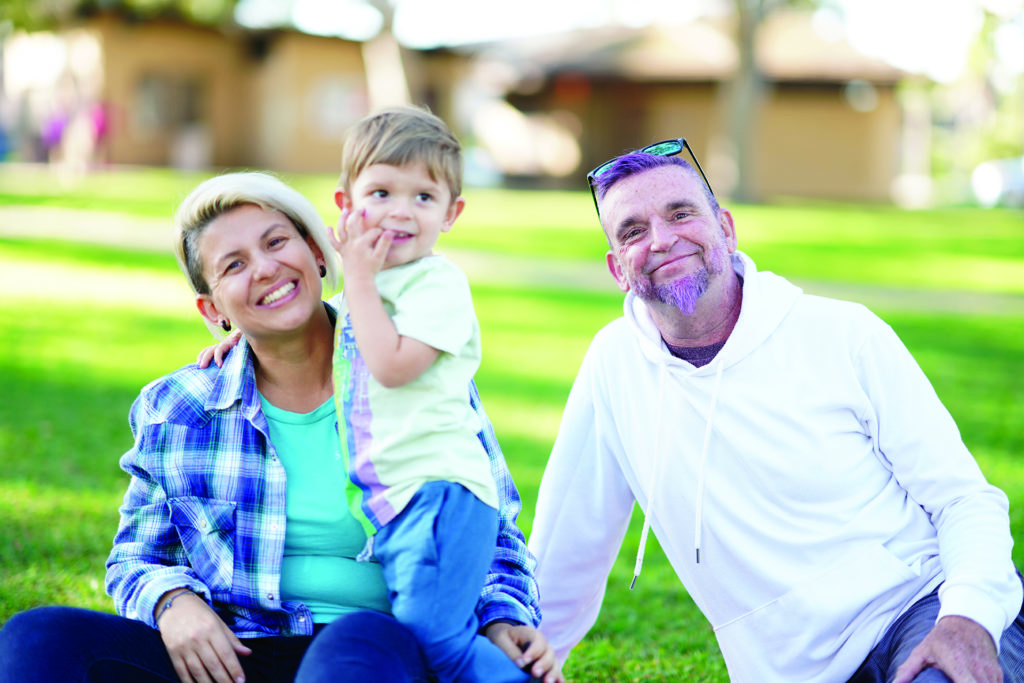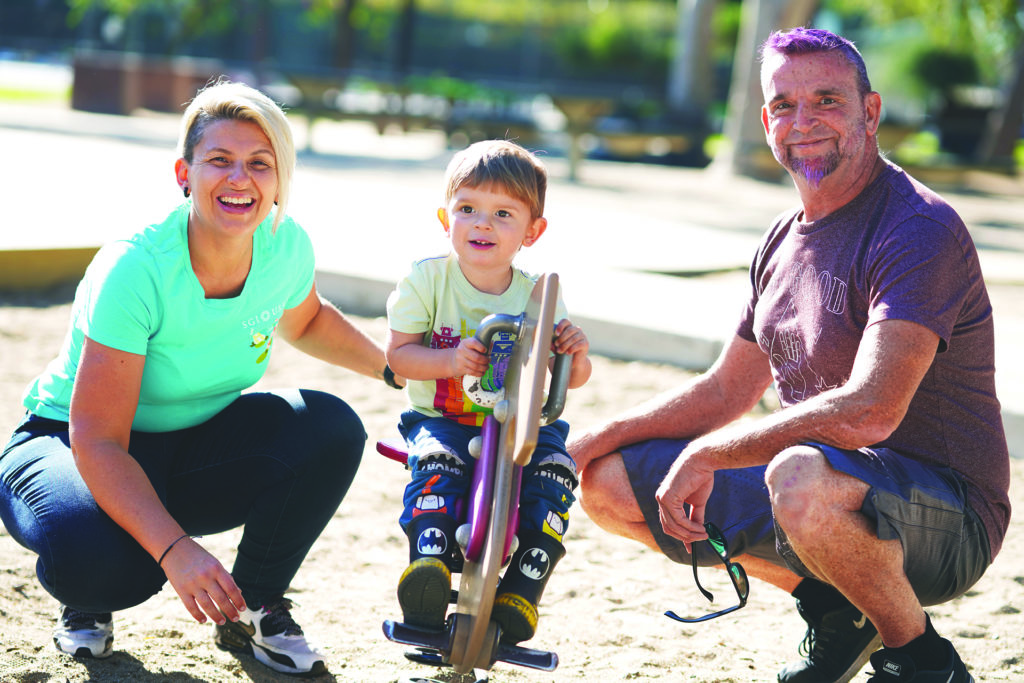Creating Lasting Change
THE FOUNDATION’S COMMUNITY IMPACT FUND GRANTEES FOCUS ON THE ROOT: BUILDING CHILD AND FAMILY RESILIENCE.

The Community Impact Fund (CIF) was established by Saint John’s Health Center Foundation to support our local health care partners in improving the health of our community. Each year the CIF committee reviews applications and makes grants to entities, striving to improve the health of local residents. In this issue of Saint John’s, we present the fourth in a series of stories on recipients of CIF grants. Our story highlights organizations that serve children, youth and families.
“THERE CAN BE NO KEENER REVELATION OF A SOCIETY’S SOUL THAN THE WAY IN WHICH IT TREATS ITS CHILDREN.” – Nelson Mandela
Just weeks after the birth of her son, Arvind, Cynthia Klingelfuss was feeling something just wasn’t right. On a routine postpartum visit to her doctor, she mentioned that she was struggling with debilitating anxiety and dark thoughts. The doctor handed her a flier for a counseling service but offered little in the way of help. The weeks wore on, and things just got worse. “It was terrible. I was scared to even walk out my door. There was nothing out there that was actually frightening, but it felt like everything was a threat. When my baby napped, I became overwhelmed with anxiety because I knew when he woke I’d need to feed and take care of him,” says Klingelfuss. Finally, in desperation, the 35-year-old new mom called the Postpartum Support International (PSI) hotline. What happened next was a blur and a godsend. PSI connected Klingelfuss with the Providence Saint John’s Child and Family Development Center (CFDC), which is supported by grants from the Saint John’s Health Center Foundation Community Impact Fund, The Atlas Family Foundation, Carl and Roberta Deutsch Foundation, and the Stockel Family Foundation. Sure enough, as soon as Klingelfuss made contact with the CFDC, a situation that seemed bleak and terrifying took a turn for the better. “The difference between someone just pushing a flier at you and someone talking to you and telling you, ‘Hang on, we have help for you’ is huge,” says Klingelfuss. That help came. After an assessment, a therapist began twice-a-week visits to Klingelfuss’ Palms apartment through the Perinatal Wellness Program—a program for low-income families who are expecting a child or have a child under age 1. The therapy sessions, which sometimes included Klingelfuss’s husband and infant, centered on talk therapy, but Klingelfuss says they were much more. When the therapist learned Klingelfuss was worried about not having a suitable crib for Arvind, the CFDC purchased one. And when Klingelfuss and her husband had troubles in their relationship, the CFDC stepped in to pay for couple’s therapy. Klingelfuss learned about child development, healthy attachment and sound parenting practices. Mom and child were also referred to another parent and baby weekly support group. The experience—described as wraparound services because it provided therapy but also referrals to other services that promoted family health and wellbeing— slowly helped stabilize Klingelfuss. “I used to go to such a dark and hopeless place,” she says. “I didn’t have anyone to talk to. But talking to my therapist, learning what we did and getting the support we needed meant we could start parenting in a healthy way.” Klingelfuss’ story is one that CFDC executive director Ruth Cañas says she’s happily seen repeated time and again. Over the last 25 years, CFDC has not only provided services to individual clients, they’ve been community mental health trailblazers, introducing the Westside to the idea that getting help for mental health should be accessible to all and isn’t something to be ashamed about. “We’re in schools, preschools, anywhere we’re needed,” says Cañas. “We’re constantly going out into the community to build relationships and try to get rid of the stigma that comes with mental health.”

It’s worked too. The center now serves about 500 ongoing patients a year. Through emergency response counseling, education and other outreach, however, the CFDC estimates it reaches about 1,000 families and provides the Westside with more than $1 million of community benefit each year. Making lasting change—real community impact, one healthier person at a time—is the whole point. By the time Arvind celebrated his 1st birthday, Klingelfuss was able to reenter the workforce. With her family mentally and physically resilient, she took a part-time job at a language school. Now she’s employed full-time as an administrative assistant at the Brazilian consulate, and her family remains solid, thriving and hopeful. They recently participated in a beach day hosted by the CDFC, and Klingelfuss continues to meet once a week with her therapist. They usually do their sessions outside at a nearby park. The therapist has been able to help Klingelfuss navigate work and family issues but also process anxiety and grief when Klingelfuss’ father fell ill and died. “When I started with the Child and Family Development Center, I was just told it was a wonderful program and that they would help me.” Now some two years later, Klingelfuss says that was an understatement. “This isn’t just help. This has been a lifesaver for my family.”

Shoring up the most vulnerable people—including children and young adults—has become a key priority of Saint John’s Health Center Foundation Community Impact Fund. Another Westside nonprofit, Safe Place for Youth, is also in sync with this mission. The Venice-based organization, which is about to embark on its third year as a Community Impact Fund grant recipient, provides services for homeless and atrisk youth ages 12 to 25. About 100 homeless young people come through Safe Place for Youth’s doors each day. Financial support from the Community Impact Fund has meant the organization can employ a case manager who oversees health and wellness services, says Rachel Stich, deputy director of Safe Place for Youth. Most of the youth who experience homelessness have been victims of trauma. Many are from abusive family situations and have experienced violence out on the streets, says Stich. Without a roof over their heads, they more often than not enter Safe Place for Youth with their mental and physical health in tatters. “Before they’re able to move forward with their education and employment, we have to address their physical and mental health,” says Stich. “The whole process is a journey toward stability. Health and wellness are so essential to helping someone transition away from the streets and achieving that stability.” The case manager is in charge of connecting youth who walk through the door with urgent and essential medical care, mental health counseling, psychiatry and support with substance abuse recovery. In addition, they introduce youth to inhouse mindfulness classes, art therapy, therapeutic outdoor programs and additional services that might assist their physical and mental well-being. Stich says having a dedicated health and wellness case manager who oversees and coordinates care for the youth has been a serious game changer. “We’ve had this incredible increase in utilization of health and wellness services as a result of having our case manager who specifically focuses on that.” As an organization, Safe Place for Youth has also been able to expand the services offered. What started eight years ago as a tiny, volunteerled day program for homeless youth now includes support for locating permanent housing or reuniting the youth with their families when feasible and safe. They’ve also been able to develop innovative programs like their Host Home program, which solicits and trains community volunteers to host young people as they search for more permanent housing—akin to a study abroad host family program. “This year through our new programs, we’ve been able to house 129 youths,” says Stich. “We have a long way to go, but that shows we can do something about this problem.”
